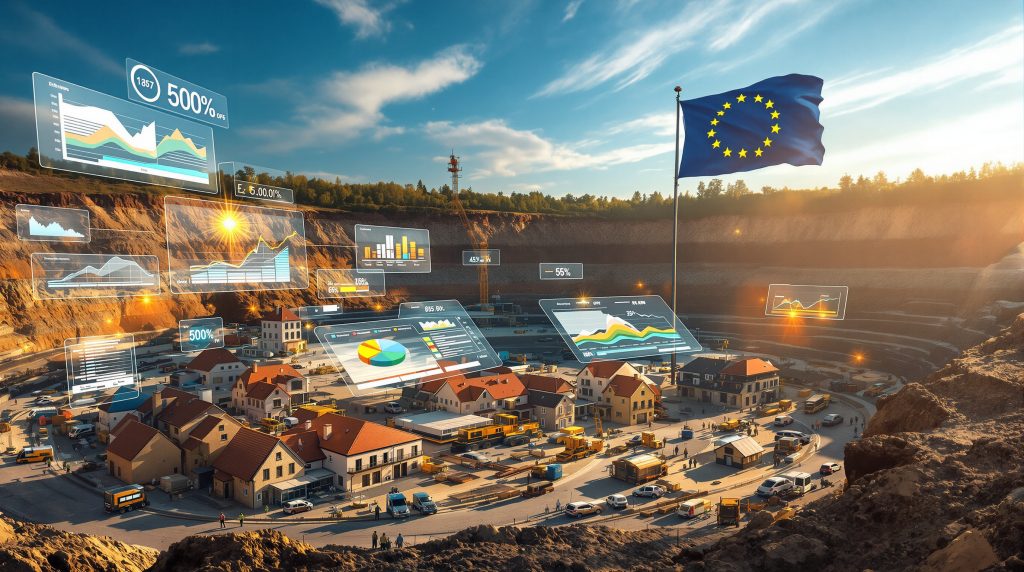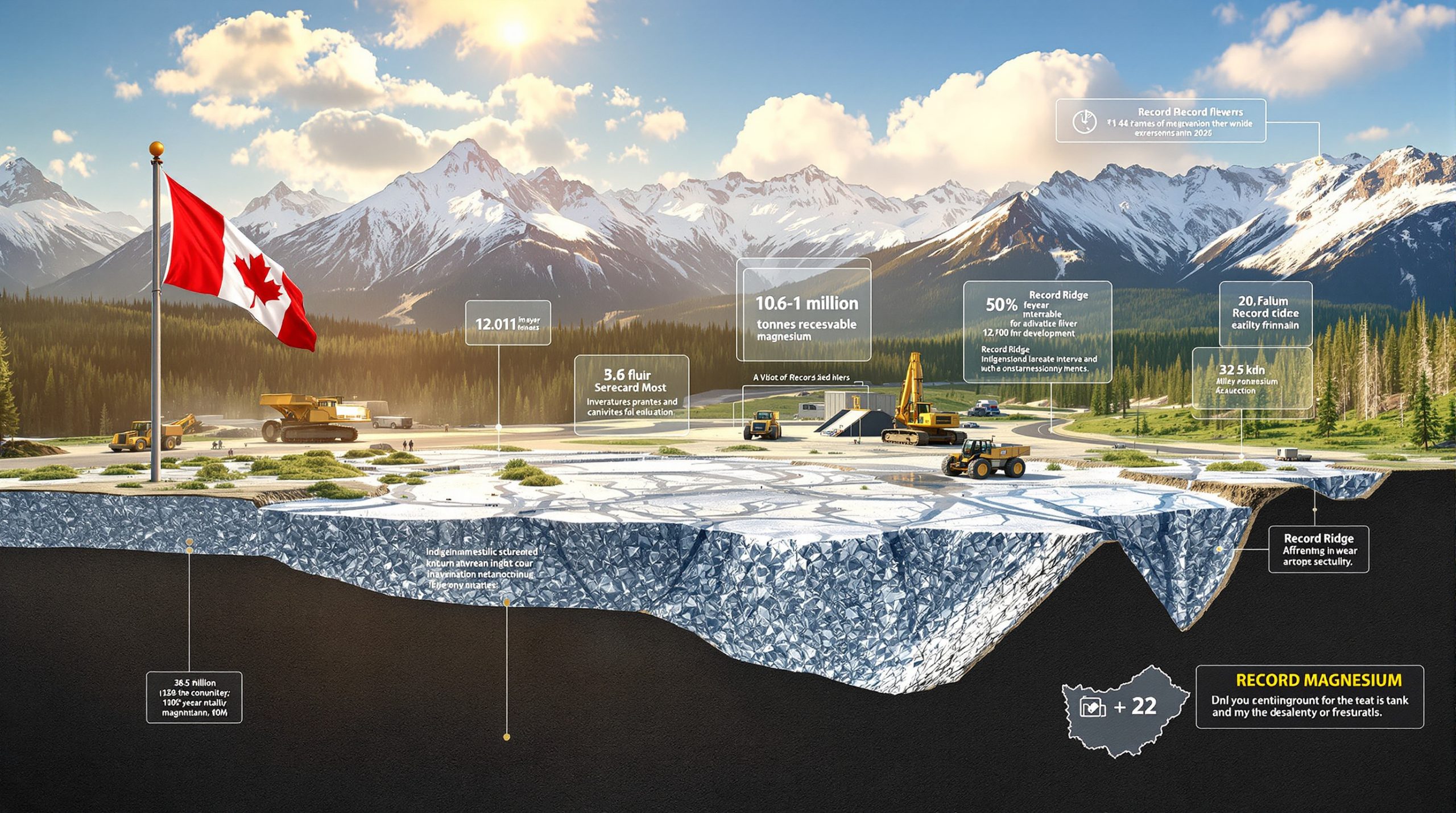What Defines a Major Mining Town Relocation Project?
Mining-induced relocations represent complex industrial undertakings that emerge when underground operations threaten community safety and infrastructure stability. These projects require extensive coordination between multiple stakeholders and can span several decades from initial planning to completion.
The scale of such relocations varies dramatically based on geological conditions, extraction methods, and population density. The Swedish mining town relocation due to mine expansion at Kiruna exemplifies how modern relocations affect thousands of residents across extended timeframes.
Essential characteristics of large-scale mining relocations include:
- Multi-decade planning and implementation schedules extending beyond 20 years
- Coordination between state-owned enterprises, government agencies, and local communities
- Comprehensive cultural heritage preservation including historic structure relocation
- Extensive compensation programs covering housing replacement and business disruption
- Complete infrastructure reconstruction encompassing utilities, transportation networks, and public facilities
Mining relocations require balancing resource extraction economics with comprehensive social responsibility obligations to affected communities.
The Kiruna case demonstrates these characteristics through LKAB's announcement of 6,000 additional resident relocations, expanding beyond the original 2004 project that initially identified 6,000 residents for resettlement. This doubling of relocation scope illustrates how extraction plans evolve over time as mining operations expand deeper underground.
How Do Underground Mining Operations Trigger Town Relocations?
Ground Subsidence Mechanics
Underground mining creates subsurface voids that eventually compromise surface stability through progressive ground settlement. As extraction operations expand deeper and wider, overlying geological formations gradually shift and compress, creating surface deformation extending several kilometres from active mining areas.
The Kiruna mine operates at approximately 1.4 kilometres underground, representing significant depth that creates extensive zones of surface influence. LKAB's planned volume increases of up to 50 percent over the next decade directly correlates with expanded subsidence risk zones affecting broader community areas.
Technical factors contributing to relocation requirements:
- Extraction depth: Operations exceeding one kilometre create larger surface impact zones
- Mining methodology: Traditional blasting techniques versus automated extraction methods produce different subsidence patterns
- Geological composition: Rock layer hardness and structural integrity affect settlement rates
- Production volume expansion: Increased extraction rates accelerate surface deformation timelines
Safety Assessment Protocols
Mining companies employ continuous monitoring systems using advanced surveying technologies to track surface movement patterns. When measured deformation exceeds predetermined safety thresholds, formal relocation planning processes commence.
Evidence of surface impact at Kiruna includes visible structural damage such as rising floor tiles and cracked masonry in residential and commercial buildings. Local business owner Fredrik Spett observed these manifestations firsthand, noting that while residents understand the implications of living above active mining operations, the actual impact magnitude exceeded expectations.
Modern monitoring approaches incorporate:
- Precision elevation mapping through satellite-based systems
- Ground-based sensor networks for millimetre-level movement detection
- Seismic monitoring arrays for underground activity assessment
- Structural integrity evaluations for buildings and critical infrastructure
What Are the Economic Drivers Behind Large-Scale Mining Relocations?
Resource Value Calculations
Relocation decisions involve comprehensive cost-benefit analyses comparing community displacement expenses against projected mineral extraction revenues. High-value deposits, particularly those containing strategic materials, often justify substantial relocation investments that exceed typical commercial thresholds.
LKAB's economic justification stems from multiple revenue streams including iron ore production and rare earth element extraction. The company accounts for approximately 80 percent of European iron ore production, shipping products as high-quality pellets valued at just over $100 per ton.
Economic justification components:
- Market dominance position: LKAB's near-monopoly on European iron ore supply provides pricing flexibility
- Product quality premium: High-grade pellets command superior pricing compared to standard ore products
- Strategic mineral deposits: Per Geijer rare earth deposit represents one of Europe's largest reserves
- Volume expansion potential: Planned 50 percent production increases over the decade
Strategic Resource Importance
The European Union has designated the Per Geijer deposit a strategic project within its critical raw materials initiative, elevating the resource above typical commercial considerations. This designation reflects geopolitical supply chain vulnerabilities and strategic autonomy objectives.
Furthermore, the global mining landscape demonstrates how strategic resources influence national policies and investment decisions across multiple regions.
| Economic Driver | Impact Level | Strategic Importance |
|---|---|---|
| Iron Ore Production | High | Steel production for military and infrastructure |
| Rare Earth Elements | Critical | Electric vehicle and smartphone manufacturing |
| Market Share | Dominant | 80% of European iron ore supply |
| Quality Premium | Substantial | Environmental regulations favour pellet products |
Current market dynamics favour higher-quality ore products as steelmakers pursue emissions reductions through pellet usage instead of traditional materials. This regulatory environment creates demand premiums that enhance economic justification for expansion-related relocations.
How Do European Mining Towns Navigate Relocation Challenges?
Government Coordination Framework
European mining relocations benefit from structured government involvement that extends beyond typical commercial oversight. State-owned mining enterprises like LKAB can access public resources and coordinate directly with government agencies to provide comprehensive community support.
Swedish Energy and Enterprise Minister Ebba Busch emphasised this commitment following the August 2025 relocation announcement, stating that no residents would be abandoned during the transition process. This represents the relocation as essential for both local community survival and national sovereignty interests.
Additionally, the mining claims framework in other jurisdictions provides valuable insights into how regulatory structures can support community interests during major mining operations.
Government support mechanisms include:
- Direct ministerial oversight and public resource allocation
- Coordination between municipal authorities and mining operators
- Integration of local relocations with national strategic objectives
- Long-term planning capabilities extending beyond typical commercial timeframes
Cultural Heritage Preservation Requirements
European relocations demonstrate sophisticated approaches to cultural heritage protection through engineering projects that preserve community identity and historical continuity. The August 2025 relocation of Kiruna's wooden church exemplifies these commitments.
The church relocation involved moving the delicate wooden structure five kilometres from its original location to avoid subsidence impacts. This engineering achievement was livestreamed internationally, with video clips attracting millions of views and demonstrating European commitment to heritage preservation during resource extraction.
During the relocation ceremony, local residents celebrated while Eurovision winner Carola performed, illustrating community engagement with preservation efforts. However, the positive atmosphere changed dramatically when residents received letters announcing 6,000 additional relocations just over one week later.
What Role Do Critical Minerals Play in Relocation Decisions?
Strategic Resource Considerations
Critical mineral deposits significantly influence relocation decision-making within the context of supply chain security and technological independence. The Per Geijer deposit near Kiruna contains rare earth elements essential for electric vehicle production and smartphone manufacturing.
Current geopolitical tensions highlight European vulnerability to critical mineral supply disruptions. China dominates global rare earth markets and has used this position as economic leverage against other nations. On October 29, 2025, China paused plans for dramatic expansion of rare earth export controls, illustrating ongoing supply chain uncertainties.
Critical mineral factors driving relocation decisions:
- Supply chain vulnerability: European dependence on geopolitically unstable regions
- Technological applications: Electric vehicles, renewable energy systems, and defence equipment
- Processing capabilities: Domestic refining capacity development requirements
- Future demand projections: Anticipated growth in clean energy technology adoption
Geopolitical Strategic Importance
EU Industry Commissioner Stephane Sejourne visited Kiruna in September 2025, emphasising that resource self-reliance requires domestic mining development. He characterised Kiruna as central to European economic sovereignty and competitiveness strategies.
The strategic designation of Per Geijer deposit reflects European priorities for technological independence and reduced dependence on external suppliers. While the deposit remains under investigation with mining potentially beginning within the next decade, its strategic importance already influences current relocation planning.
Mining relocations involving critical minerals receive government support beyond typical commercial considerations due to national security interests and strategic autonomy goals. This governmental backing can justify substantial public investment in projects that might not achieve commercial viability under purely market-driven criteria.
How Are Historic Structures and Cultural Heritage Preserved?
Building Relocation Engineering
Preserving historic structures during mining relocations requires specialised engineering techniques that maintain architectural integrity whilst ensuring structural stability during transport. The Kiruna church relocation demonstrates advanced construction and preservation technologies applied to delicate wooden architecture.
The church relocation project involved moving the entire structure five kilometres without compromising its historical authenticity or structural soundness. This achievement required careful route planning, specialised transport equipment, and temporary support systems designed specifically for the building's unique construction characteristics.
Technical preservation approaches include:
- Structural reinforcement systems: Temporary support frameworks for transport phases
- Foundation preparation protocols: New site preparation and utility infrastructure connections
- Transport logistics coordination: Route optimisation and specialised moving equipment deployment
- Post-relocation restoration: Historical accuracy maintenance and structural repairs
Community Identity Maintenance
Successful mining town relocations must address social and cultural continuity alongside physical infrastructure replacement. This involves recreating familiar community spaces, preserving social networks, and maintaining local traditions that define community character.
The construction of Kiruna's new town hall in 2018 as the first major building in the relocated town centre demonstrates comprehensive urban planning extending beyond individual property relocations. This approach recognises that community functionality depends on recreating familiar social and civic infrastructure.
Mayor Mats Taaveniku, a former management consultant, oversees municipal coordination during the transition period. However, he reported receiving minimal advance notice from LKAB before the August 2025 announcement, suggesting communication challenges between mining companies and local authorities despite coordinated planning efforts.
What Are the Long-Term Impacts on Relocated Communities?
Economic Transition Challenges
Mining-dependent communities face unique vulnerabilities during relocation due to economic concentration around single-industry employment. The transition period creates uncertainty for both individual households and local businesses that depend on stable community demographics.
Local business impacts include structural damage from subsidence and uncertainty about future compensation arrangements. Jan Gronberg, owner of the Arctic Eden Hotel, experienced previous relocation when demolition crews destroyed his earlier business location closer to the mine. He now faces uncertainty about LKAB's compensation offerings for his current hotel property.
Moreover, the impacts of such projects extend beyond immediate relocation concerns. For instance, recent developments show how other mining projects face challenges, as seen with the uranium project halt in Namibia, highlighting the complex nature of resource extraction operations.
Economic impact considerations include:
- Employment stability: Mining job preservation during operational expansion
- Business viability challenges: Revenue disruption during community transition periods
- Property value fluctuations: Real estate market uncertainty affecting personal wealth
- Economic diversification needs: Development of alternative economic activities beyond mining
Residential Displacement Impacts
Individual households experience multiple relocations as mining expansion affects different areas over time. Tanja Mattila, a 54-year-old teacher, invested approximately $300,000 in a new home after relocating from an apartment also designated for demolition. Her experience illustrates the repeated displacement challenges faced by community members.
Mattila teaches Finnish and Meankieli, a minority language, highlighting how relocations affect cultural diversity and language preservation within affected communities. Her planned retirement in the new property was disrupted by the expanded relocation announcement, creating personal financial and emotional stress.
The cumulative psychological impact on residents includes uncertainty about future stability and concerns about community continuity. Furthermore, these challenges underscore the importance of mental health strategies in mining communities during periods of significant change.
How Do Mining Companies Manage Community Relations During Relocations?
Stakeholder Engagement Protocols
Mining companies must navigate complex stakeholder relationships during relocation projects, balancing operational requirements with community concerns and government oversight. LKAB's communication approach demonstrates both coordination capabilities and areas requiring improvement.
The August 2025 announcement of 6,000 additional relocations occurred through direct letters to affected residents, followed by community meetings to explain the expansion plans. However, Mayor Taaveniku reported receiving minimal advance notice from LKAB, suggesting gaps in municipal coordination protocols.
The Guardian reports extensively on how this Swedish mining town relocation due to mine expansion has unfolded over time, providing valuable insights into the gradual nature of such massive undertakings.
Engagement strategies observed in European relocations:
- Direct written communication to affected households with specific relocation timelines
- Community meetings providing project updates and answering resident questions
- Individual consultations for personalised relocation planning and compensation discussions
- Coordination with municipal authorities for infrastructure planning and development
Compensation and Support Programs
Mining companies provide comprehensive support packages addressing both immediate relocation needs and longer-term community sustainability. LKAB's approach includes paying for community relocation whilst working to maintain social cohesion during the transition process.
The company's support framework extends beyond basic property replacement to encompass business relocation assistance and community infrastructure development. The construction of new civic buildings and the careful preservation of cultural landmarks demonstrate commitment to maintaining community functionality.
However, residents and business owners express uncertainty about specific compensation amounts and timelines. LKAB's statement that communication regarding costs and arrangements could only occur after internal assessment completion suggests structured but potentially slow decision-making processes.
What Lessons Can Other Mining Regions Learn From European Relocations?
Best Practice Development
European mining relocations establish precedents for comprehensive community support and heritage preservation that inform similar projects globally. The Kiruna experience demonstrates both successful approaches and areas requiring improvement for future relocations.
Successful elements include government coordination, cultural heritage preservation commitment, and comprehensive infrastructure replacement planning. The international attention generated by the church relocation demonstrates effective public engagement and transparency in preservation efforts.
In addition, understanding mine reclamation evolution helps provide context for how the mining industry is developing more responsible approaches to community impact management across different project phases.
Transferable best practices include:
- Early coordination between mining operators and government agencies
- Comprehensive cultural heritage assessment and preservation planning
- Public documentation and transparency in major preservation projects
- Integration of local relocations with broader strategic policy objectives
Communication and Coordination Improvements
Areas requiring improvement include municipal coordination and advance notification protocols. The limited advance notice provided to Mayor Taaveniku suggests that even well-coordinated European projects experience communication gaps between different stakeholder groups.
Business owner experiences indicate that whilst residents understand the general implications of living above mining operations, specific impact magnitude and timing often exceed community expectations. This suggests opportunities for improved predictive modelling and community education about subsidence progression.
Future mining relocations could benefit from enhanced early warning systems and more detailed impact progression modelling to provide affected communities with better preparation timelines and expectations management.
Future Outlook for Mining-Induced Relocations
Increasing Frequency Predictions
Global demand for critical minerals continues expanding as clean energy technology adoption accelerates worldwide. As easily accessible deposits become depleted, mining operations will increasingly require deeper extraction methods that create larger surface impact zones.
The European experience with critical mineral supply chain vulnerabilities suggests that other regions will prioritise domestic resource development despite relocation challenges. Government support for strategic mining projects indicates acceptance of relocation costs when balanced against supply security benefits.
Trends suggesting increased relocation frequency:
- Expanding demand for rare earth elements and battery materials
- Depletion of shallow, easily accessible mineral deposits
- Government priorities for supply chain security and strategic autonomy
- Technological requirements for defence and renewable energy systems
Technological Development Applications
Advanced monitoring technologies and construction automation may reduce relocation frequency and associated costs through more precise extraction methods. The automation observed at Kiruna, including Xbox controller-operated machinery, suggests technological advancement potential.
However, traditional blasting methods continue as essential components of deep underground mining, indicating that technological solutions may complement rather than replace conventional extraction approaches. Future developments in predictive modelling and remote monitoring could enable more precise subsidence forecasting and potentially reduce affected area sizes.
Emerging technologies in structural preservation and building relocation may also reduce cultural heritage preservation costs, making comprehensive community relocations more economically feasible for marginal mineral deposits.
Disclaimer: This analysis contains forward-looking statements and speculation about future mining industry trends. Actual outcomes may vary significantly from predictions presented. Readers should conduct independent research before making investment or policy decisions based on this information.
Ready to Discover the Next Major Mining Opportunity?
Discovery Alert's proprietary Discovery IQ model provides instant notifications on significant ASX mineral discoveries, ensuring you never miss transformative opportunities like those driving major mining relocations and strategic resource developments worldwide. Explore how historic discoveries have delivered exceptional returns and begin your 30-day free trial today to position yourself ahead of the market.




